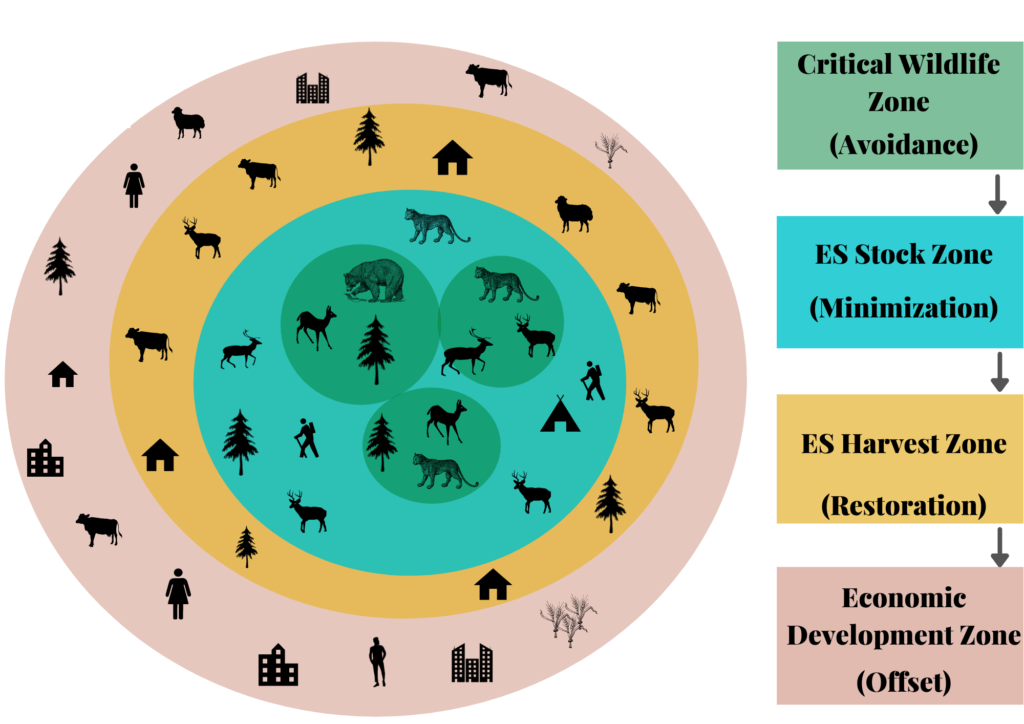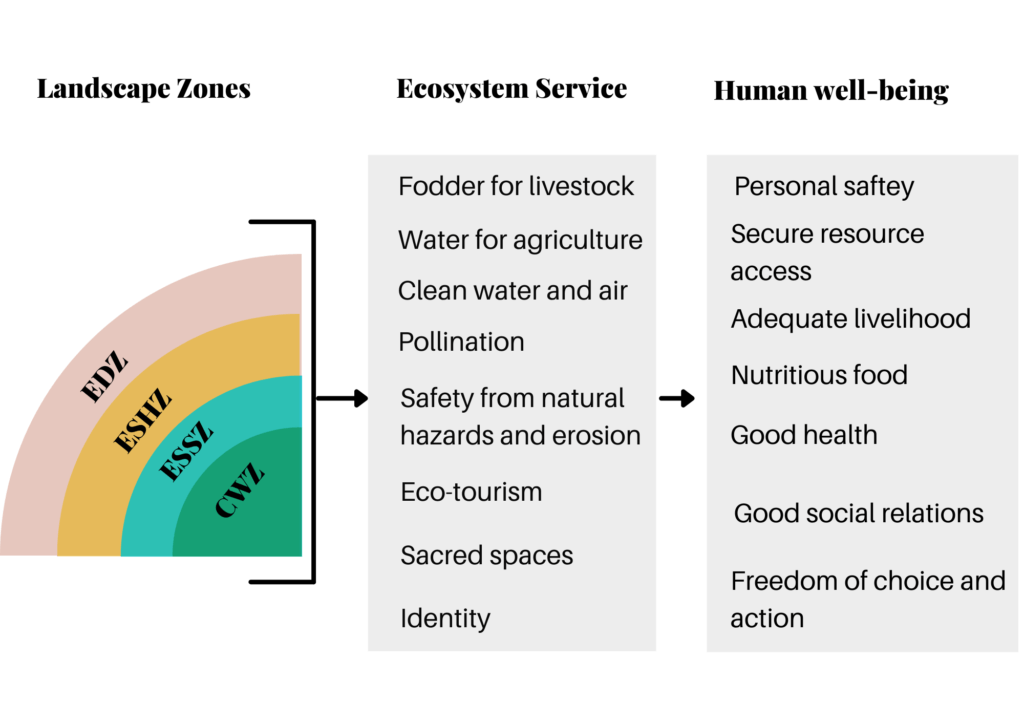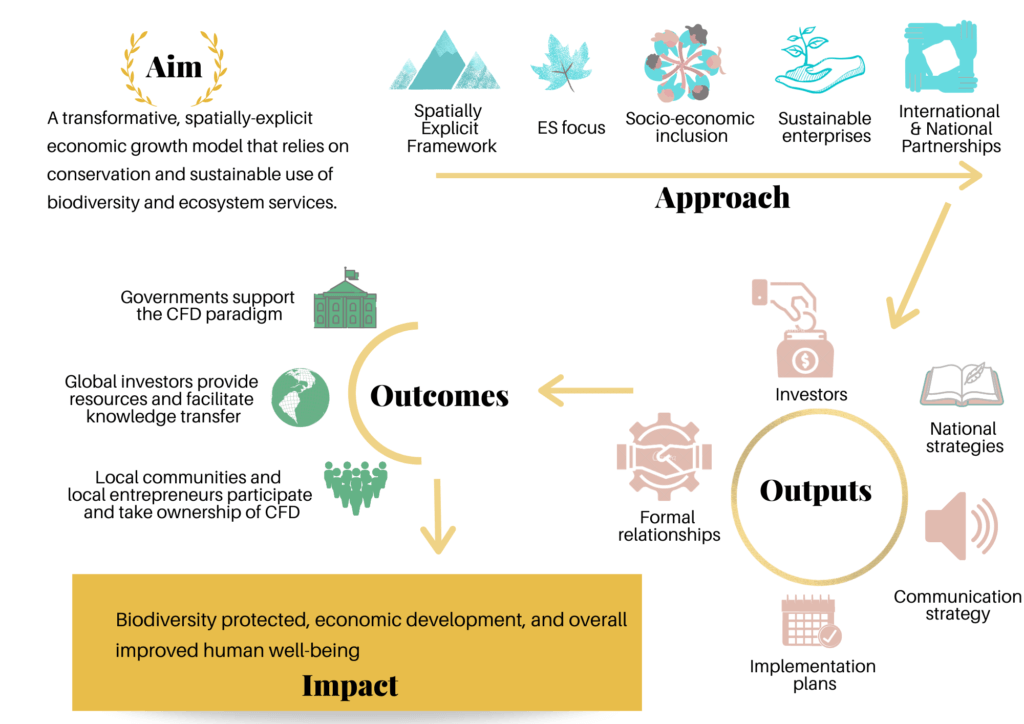Conservation For Development
Building economies of value rather than economies of scale
Economic development has been one of humanity’s primary concerns in modern times. Since the advent of the industrial revolution, the predominant economic model has involved economies of scale, and relied on unsustainable exploitation of natural resources and ecosystems. This development-for (the sake of)-development model, while leading to significant economic gains, has led to planetary scale environmental degradation and an ongoing mass extinction of species. In response to the rapid environmental degradation, efforts to conserve biodiversity began with the conservation-for-conservation approach of setting up protected areas free from human presence. It then expanded to include the development-for-conservation approach that integrated livelihoods and social welfare of local communities living in or around protected areas into conservation efforts. These various approaches have helped make economic and biodiversity gains, but have failed to address planetary scale environmental degradation or to halt the mass extinction of species.
The conservation-for-development model outlines an approach for the remaining unprotected areas of biodiversity importance. It focuses on economies of value rather than scale, and relies on the generation and sustainable use of ecosystem services. This conservation-for-development approach would be an attempt to bring humanity and nature closer, and to move away from nature–people dualism that has characterized economic development and biodiversity conservation so far.
The conservation for development approach is spatially and contextually specific, and it generally rests on five main pillars:
- Spatially explicit conservation framework that sets the boundary conditions for the sustainable utilization of ecosystem services together with species and habitat conservation. This framework is designed to provide the foundation for regional environmental management and land use policy as well as the basis for guidelines and rules which the economic enterprises would need to comply with.

Figure 1: Mitigation hierarchy and zonation mapping of special ecological zones under the conservation for development model.
- Ecosystem services focus where the landscape is viewed as a source of a wide range of provisioning, regulating, and cultural ecosystem services that are critical for human well-being (Millennium Ecosystem Assessment 2005).

Figure 2: An ecosystem services based representation of the conservation for development model (EDZ: Economic Development Zone, ESHZ: Ecosystem Services Harvest Zone, ESSZ: Ecosystem Services Stock Zone, CWZ: Critical Wildlife Zone).
- Sustainable value enterprise model premised on the creation of a set of globally and locally viable enterprises focusing on economies of value over economies of scale, that are economically profitable and ecologically sustainable, and are driven by the regional ecological wealth, cultural heritage, and social capital.
- Socio-economic inclusion across gender, class, and other social divisions.
- Wide-ranging international partnerships that bring together a combination of scientific knowledge, development expertise, conservation experience, business acumen, technology capabilities, and financial capital.
A simplified theory of change

Figure 3: A simplified theory of change for the conservation-for-development paradigm detailing the strategic vision, the approach, the outcomes, and the overall impact expected.
The vision of the conservation-for-development approach is to create a transformative, spatially-explicit economic growth model that relies on conservation and sustainable use of biodiversity and ecosystem services. In this model, attempts are made to bring people and nature closer, and move away from human-nature dualism that has so far characterized both economic development and biodiversity conservation efforts. There is explicit acknowledgement that humans rely on nature for their physical and emotional well-being.
Government support, global investors, and local partnerships can lead to the longer term impact of protecting biodiversity while ensuring economic development and improved human well-being in the landscapes of interest. This is achieved through the five pillars of the conservation-for development approach:
- spatially explicit conservation and economic development framework;
- reliance on generation and sustainable use of ES;
- socio-economic inclusion;
- ecologically sustainable enterprises;
- international and national partnerships.


